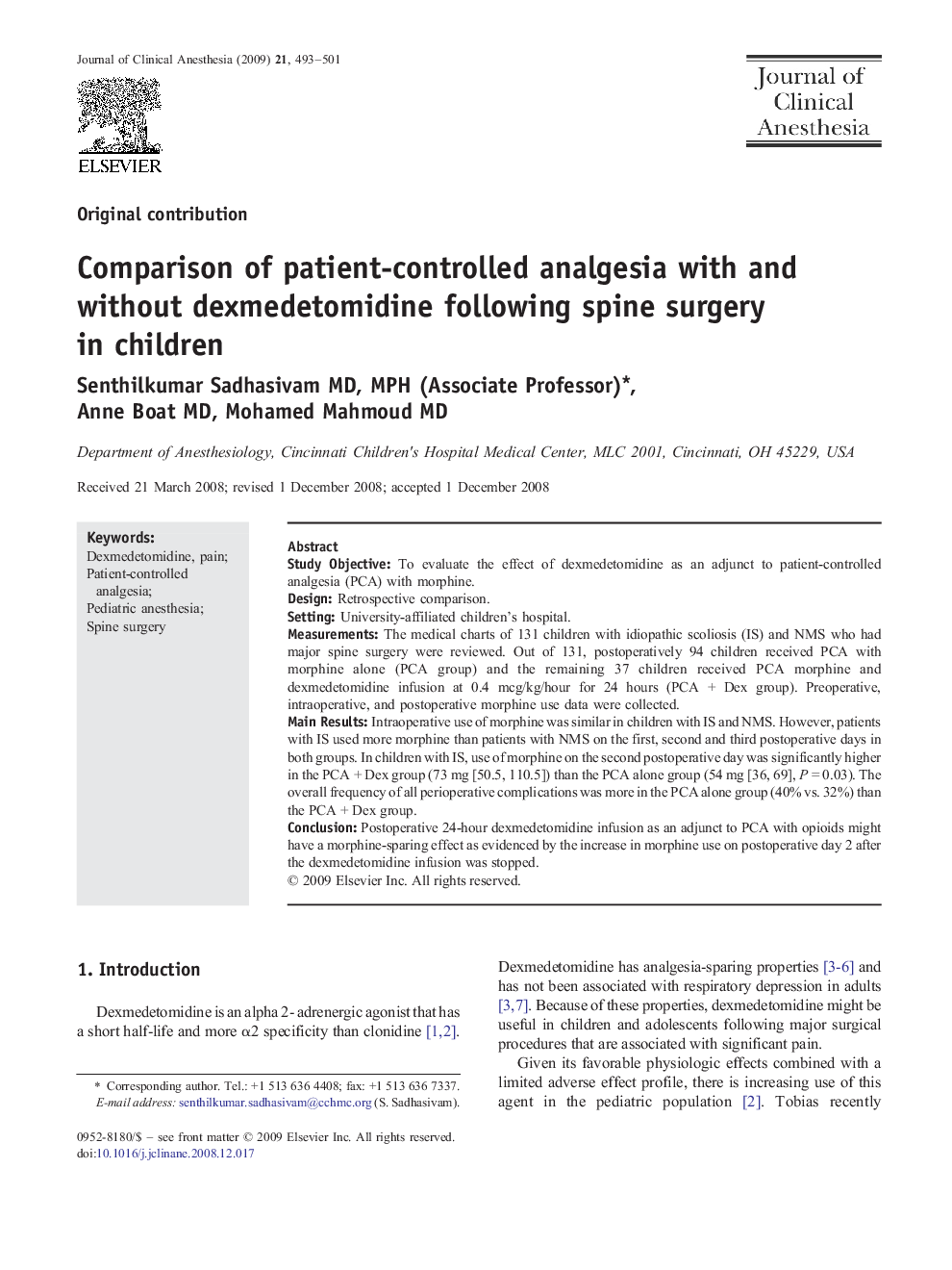| Article ID | Journal | Published Year | Pages | File Type |
|---|---|---|---|---|
| 2763393 | Journal of Clinical Anesthesia | 2009 | 9 Pages |
Study ObjectiveTo evaluate the effect of dexmedetomidine as an adjunct to patient-controlled analgesia (PCA) with morphine.DesignRetrospective comparison.SettingUniversity-affiliated children's hospital.MeasurementsThe medical charts of 131 children with idiopathic scoliosis (IS) and NMS who had major spine surgery were reviewed. Out of 131, postoperatively 94 children received PCA with morphine alone (PCA group) and the remaining 37 children received PCA morphine and dexmedetomidine infusion at 0.4 mcg/kg/hour for 24 hours (PCA + Dex group). Preoperative, intraoperative, and postoperative morphine use data were collected.Main ResultsIntraoperative use of morphine was similar in children with IS and NMS. However, patients with IS used more morphine than patients with NMS on the first, second and third postoperative days in both groups. In children with IS, use of morphine on the second postoperative day was significantly higher in the PCA + Dex group (73 mg [50.5, 110.5]) than the PCA alone group (54 mg [36, 69], P = 0.03). The overall frequency of all perioperative complications was more in the PCA alone group (40% vs. 32%) than the PCA + Dex group.ConclusionPostoperative 24-hour dexmedetomidine infusion as an adjunct to PCA with opioids might have a morphine-sparing effect as evidenced by the increase in morphine use on postoperative day 2 after the dexmedetomidine infusion was stopped.
